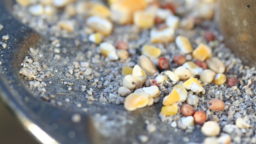It’s so wonderful for children to grow up on a homestead. Fresh air, animals, learning about nature and plants, and also, work ethic! Children are never too young to participate in homestead duties. Here’s a list of ideas for children, by age group, to get involved in farm chores. Hey, they’re another mouth to feed, why not put them to work?
Toddlers
Toddlers will most likely need to be closely supervised, but they’re often eager to help out and get involved. Some tasks they can do and be involved in are filling up feed buckets or water troughs, throwing scratch to chickens or scraps to pigs or goats, brushing animals, weeding, or harvesting from the garden.
Ages 4-5
This age group can probably do everything toddlers would do with more independence, as well as help plant seeds, let animals out in the morning or back in in the evening, collect eggs, help with food prep and food processing, hang laundry and care for chicks or other small animals that require constant attention.
Ages 6-9
This age group can again probably do everything younger children can do with more and maybe even complete independence, as well as learn how to milk animals, do basic landscaping and gardening such as digging, raking, and maybe even tilling, watering the garden and have regular chores that they earn allowance for and can be relied upon to do regularly.
Ages 10-12
By this age group children can be expected to have much more responsibility, including for the above tasks as well as regularly milking animals, bathing and grooming, helping with business aspects of the homestead like going to the farmer’s market or learning about keeping track of expenses and income, giving medication to animals and/or monitoring conditions of pregnant or sick animals.
Ages 13+
By this age, they’re pretty much official farmhands! They can handle all the above tasks and by this age should be held accountable for them. They can also learn to handle animals such as horses or cows, operate light machinery, help with more serious garden tasks like digging or pickaxing, begin to assist with live births of animals, and should be learning more and more about what adults handle as the years go on.
These are guidelines, of course, you as a parent will know what your child can reasonably handle. But giving children responsibilities and independence where they can learn what it’s like to have people rely on them is a wonderful character builder, and will help them become assured, hard-working, reliable adults.
If you liked this, you might also enjoy…








